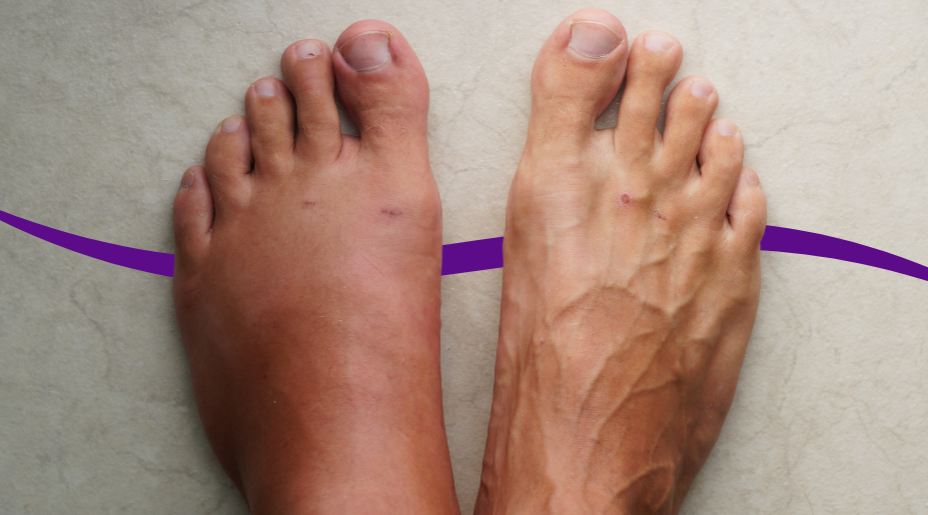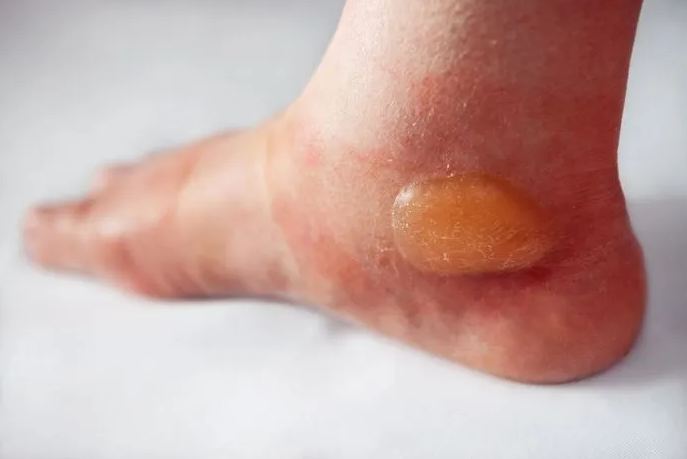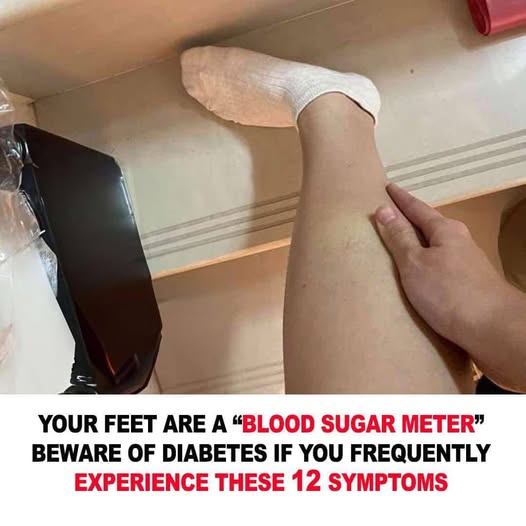Diabetes often affects feet first, but symptoms can start quietly. Recognizing early signs such as numbness, sores, or changes in appearance can help you.
1. Tingling, Numbness & Burning Sensations
One of the earliest and most common symptoms is peripheral neuropathy — damage to the nerves in your feet. This can cause sensations like tingling, burning, numbness, even “pins and needles” feelings. Up to 50% of people with diabetes experience this nerve damage, which often begins in the toes and feet . According to the American Podiatric Medical Association, about 70% of diabetic patients will encounter these symptoms at some point.

2. Loss of Sensation & Increased Injury Risk
When neuropathy dulls your ability to feel, cuts, blisters, or ulcers may go unnoticed. Reduced pain perception means wounds can worsen or become infected. Diabetic foot ulcers occur in roughly 25–34% of people with diabetes and are often due to nerve damage combined with poor circulation. Untreated ulcers can progress to bone infection, gangrene, and sometimes amputation.
3. Swelling & Poor Healing
Diabetes can also impair blood flow (peripheral artery disease), leading to swelling, especially in the feet and ankles. Open wounds, especially on the feet, often heal slowly or not at all. Cholesterol-related circulation problems (PAD) may produce symptoms like hair loss, brittle toenails, and cold or pale skin.
4. Nails & Skin Changes
Dry, cracked skin—due to reduced moisture—is common and can lead to infections if neglected .
- Fungal infections, especially in toenails, present as thickened, yellow or brittle nails
- Thickened or discolored nails can also signal more deep-rooted issues like lymphedema or psoriasis
5. Foot Deformities & Structural Issues
Progressive neuropathy may damage muscles and joints, leading to foot deformities such as hammertoe, bunions, or collapsed arches (Charcot foot) . Charcot foot is marked by swelling, redness, warmth, and changes to the foot’s structure . These deformities create pressure points that can cause blisters, ulcers, and potentially severe infections.
6. Leg Pain or Cramping
Although nerve pain often centers in the feet, it can spread to the calves, thighs, or hips, causing cramps, sharp pains, or leg weakness—especially during activity . Leg pain during walking that eases with rest—known as intermittent claudication—can indicate blocked arteries and poor circulation.
Why Early Detection Saves Lives
Without proper sensation or blood flow, minor injuries can escalate rapidly into infections, tissue death, and even sepsis or amputation. Early recognition enables treatments like improved blood sugar control, wound care, medication, or surgery.
Proactive Monitoring & Care
Daily foot checks are essential—inspect for redness, blisters, cuts, swelling, or nail changes. Keep feet clean, moisturized (but avoid between toes), and always wear well-fitting footwear and socks. Maintain glycemic control through diet, medication, and exercise. Also, schedule regular check-ups with healthcare professionals, including podiatrists, for monitoring and early intervention.

Final Takeaway
Your feet often reveal the earliest signs of diabetes-related complications—nerve damage, poor circulation, skin changes, and structural issues. By knowing these warning signals and taking swift action—daily monitoring, healthy habits, and professional care—you significantly reduce your risk of serious outcomes and keep your feet strong and healthy.

















